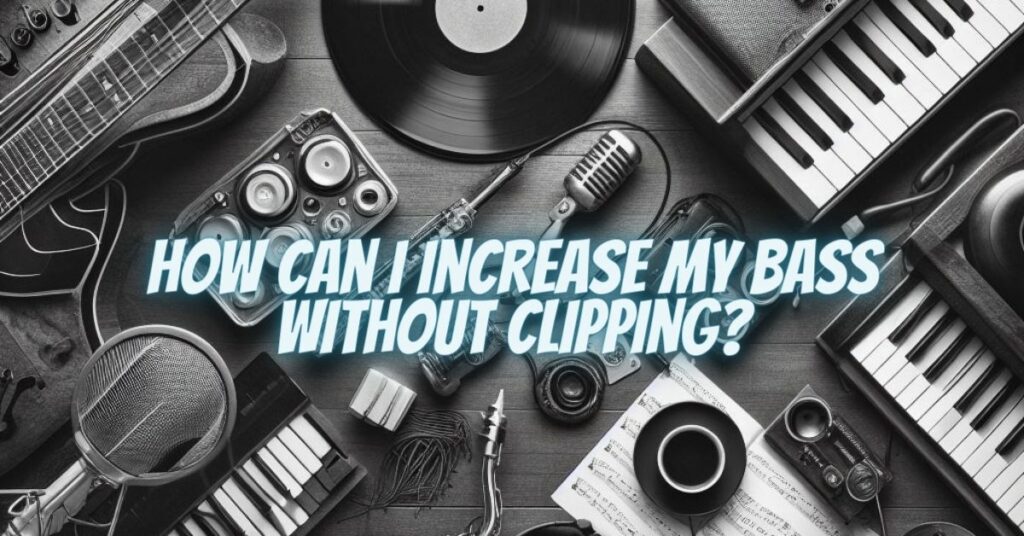Clipping is a type of audio distortion that occurs when the signal exceeds the maximum amplitude. This can happen when you try to increase the bass too much. Clipping can be very harsh and unpleasant to listen to, and it can also damage your speakers.
There are a few things you can do to increase bass without clipping:
- Use a limiter. A limiter is a compressor with a very high ratio and a very fast attack time. This means that it will quickly reduce the gain of any signal that exceeds a certain threshold level. This can be very effective at preventing clipping.
To use a limiter to increase bass without clipping, set the threshold level just below the point where the signal starts to clip. Then, adjust the ratio and attack time to achieve the desired sound.
- Use a compressor. A compressor can be used to reduce the dynamic range of a signal. This means that it will make the soft parts louder and the loud parts quieter. This can make the bass sound more prominent in the mix without causing clipping.
To use a compressor to increase bass without clipping, set the threshold level so that it compresses the bass frequencies without compressing the other frequencies in the mix. Then, adjust the ratio and attack time to achieve the desired sound.
- Use EQ. EQ can be used to boost the bass frequencies. However, it is important to be careful not to boost the bass too much, as this can lead to clipping.
To use EQ to increase bass without clipping, start by boosting the bass frequencies slightly. Then, listen to the mix and adjust the EQ until you are satisfied with the sound.
- Use subwoofers. Subwoofers are speakers that are designed to reproduce low frequencies. If you have subwoofers, you can use them to boost the bass in your mix without causing clipping on your main speakers.
To use subwoofers to increase bass without clipping, connect the subwoofers to your amplifier and set the crossover frequency so that the subwoofers only reproduce the low frequencies. Then, adjust the volume level of the subwoofers to achieve the desired sound.
Here are some additional tips for increasing bass without clipping:
- Start with a good source recording. If the source recording does not have much bass, it will be difficult to increase the bass without clipping.
- Use high-quality equipment. Cheap equipment is more likely to clip than high-quality equipment.
- Be careful with digital clipping. Digital clipping is a type of distortion that occurs when the digital signal exceeds the maximum amplitude. Digital clipping can be very harsh and unpleasant to listen to.
- Monitor your levels. It is important to monitor your levels carefully to prevent clipping. You can use a VU meter or a peak meter to monitor your levels.
If you are unsure of how to increase bass without clipping, it is a good idea to consult with an experienced audio engineer. They can help you to achieve the desired sound without causing clipping.
Here are some additional tips from experienced audio engineers:
- Use a spectrum analyzer. A spectrum analyzer is a tool that can show you the frequency distribution of a signal. This can be helpful for identifying which frequencies are causing clipping.
- Use a clipping indicator. A clipping indicator is a tool that can tell you if a signal is clipping. This can be helpful for preventing clipping in real time.
- Use a loudness meter. A loudness meter is a tool that can measure the loudness of a signal. This can be helpful for ensuring that your mix is not too loud, which can lead to clipping.
By following these tips, you can increase bass in your mixes without clipping. This will help you to achieve the desired sound without causing distortion or damaging your speakers.


